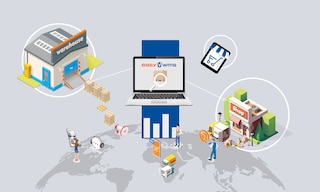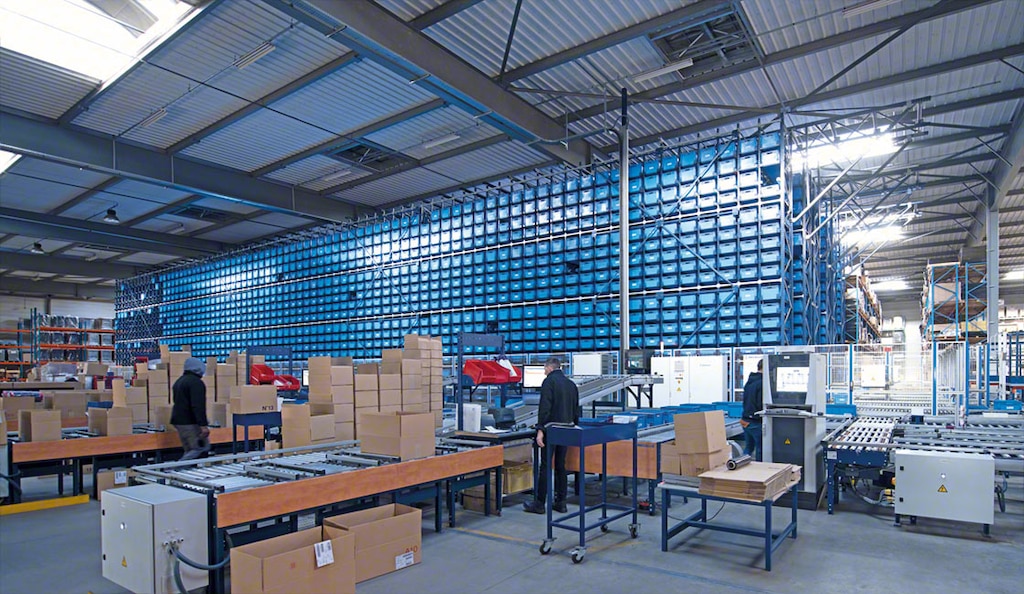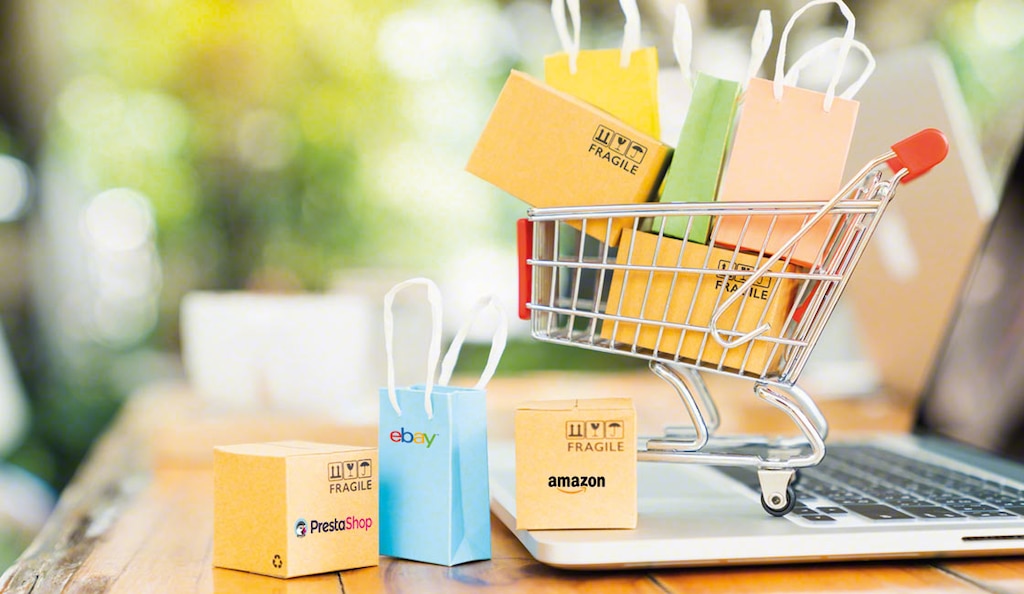
What is multichannel retailing?
Multichannel retailing is a sales strategy consisting of using different physical and/or digital channels to market or distribute products or simply provide customers with relevant information.
Although multichannel retailing is well established in many organizations, new consumer trends have made this retail model much more complex and even insufficient for many companies. And why is this? With the multichannel strategy, each channel acts independently, so the user takes advantage of the most comfortable and accessible channel but can’t change seamlessly from one to another. This is one of the reasons why multichannel is gradually giving way to omnichannel. In fact, in its report Retailing 2020: Winning in a polarized world, PwC reveals that the number of businesses that have invested in the omnichannel experience has risen from 20% to over 80%.
Multichannel retailing definition
Multichannel is a customer management strategy that enables you to interact with your customers through multiple communication channels. In the logistics and sales fields, a multichannel strategy allows consumers to purchase their products and interact with suppliers by means of different platforms.
Multichannel retailing spans several channels, both online and offline. The main ones are:
- Cellphone apps
- Social media
- Blogs, forums, and communities
- Webpages
- Television
- Telemarketing
- Postal mail
- Newspapers and magazines
- Physical stores
The aim of being present in multiple channels is simple: to improve your chances of reaching more people, thus increasing the number of potential consumers.

Drawbacks to the multichannel strategy
For customers, multichannel retailing represents a clear advantage over the traditional model based on a single sales channel. However, as the first channel diversification strategy, it does have its disadvantages when compared to a more sophisticated paradigm such as omnichannel. Over the years, these constraints have become more noticeable:
- Channels disconnected from each other. Consumer habits are not what they were when multichannel first came along. Now, users want more flexibility, moving between channels and even shopping in two at once. Trying to keep users in a single channel has become one of the major handicaps of multichannel retailing.
- Difficulty in managing more and more channels. Nowadays, we have multiple channels, thanks to advances in new technologies and the internet. For companies with a multichannel strategy, it’s becoming increasingly difficult to manage so many independent lines of communication that work differently.
- Loss of channel prominence. The decision to purchase a product in a physical store, a marketplace, or an ecommerce platform is no longer relevant. Today, the channel has taken a back seat to the brand and the message. Users sometimes don’t even remember where they made their purchase — they only remember what they bought.
Generally, the main downside to the multichannel strategy is that the user doesn’t see the different sales channels as an overall offering, but as separate stores and platforms. And this seriously complicates the customer-supplier relationship.
From multichannel to omnichannel: an inevitable journey
Although multichannel retailing and the omnichannel strategy both involve selling via a number of sales channels, there’s a difference in the customer experience as it relates to the various channels.
At the beginning, using multiple channels to reach consumers was a huge success: the message, the product, and the branding were the same across all channels even though they were independent. Over time, companies realized that customers shopped in multiple channels to carry out different transactions relating to the same order. Thus, it was no longer enough to simply add channels; they had to be well integrated with each other.
It was then that the need arose for all channels to work in sync so that customers could move seamlessly from one to another. This gave rise to the omnichannel trend, which lets consumers combine multiple channels during the purchasing process, making for a unique, personalized experience.
In a survey of 46,000 consumers of a single company, Harvard Business Review found that only 7% bought exclusively online, and 20% shopped only in stores. Meanwhile, the remaining majority (73%) used several purchasing channels. Additionally, customers who used more than four channels spent 9% more in brick-and-mortar stores compared to those who used only one channel.
Many companies are still transitioning from multichannel retailing to omnichannel. The Covid-19 pandemic has triggered this evolution with the aim of providing consumers with a shopping experience where all channels are integrated.

Technology to manage the transition
From a logistics standpoint, having points of sale in different channels entails an increase in the number of orders to be prepared in the facility. That’s why it’s advisable to implement warehouse management software (WMS) that coordinates logistics operations, automates tasks such as stock control and goods entries and exits, and, in short, digitizes management to reduce errors.
Warehouse management software such as Easy WMS, the WMS from Interlake Mecalux, works in line with the characteristics of multichannel and omnichannel logistics. That is, it helps to control and optimize inventory, reducing time and movements dedicated to order picking.
Likewise, Easy WMS is a tool that facilitates the transition from multichannel to omnichannel; its different modules — WMS for Ecommerce, for instance — expand the features of the software. This module is geared towards ecommerce companies and adds to Easy WMS functionalities such as order personalization (kitting and gift wrapping) and sequenced order picking (single-unit, multi-unit).
Another module that fosters omnichannel is Marketplaces & Ecommerce Platforms Integration, an extension of Easy WMS that integrates the logistics facility with the main marketplaces and ecommerce platforms in the market (Amazon, eBay, and PrestaShop, to name a few).

Multichannel businesses that have successfully made the switch to omnichannel
Multinational company Danone (known as Dannon in the US) has adapted its facility in Valdemoro (Spain) to omnichannel in order to prepare up to 700 orders a day. Our company installed Easy WMS and two modules: Multi Carrier Shipping Software manages communication between the warehouse and the carriers that distribute online orders, and Supply Chain Analytics Software analyzes data to make logistics operations more agile, modern, and intelligent. Mecalux software solutions streamline order picking for wholesalers, retailers, ecommerce customers, etc.
Decathlon is another business that’s adapting its logistics operations to omnichannel with storage systems from us, specifically, mezzanine floors outfitted with picking shelves. This type of storage system has been installed in Decathlon’s warehouses in Italy, Brazil, France, Germany, Poland, and the UK.
In the case of the UK, Decathlon UK Project Manager Zsolt Kabai says that the Mecalux solutions “facilitate and accelerate the processing of up to 3,000 orders per day that are sent to customers shopping online from the United Kingdom and Ireland. We also dispatch between 50,000 and 60,000 items every day among all the different shops Decathlon owns in the UK.”
Making the change from multichannel
Being present in all channels used by consumers — or in as many channels as possible, at least — is the main goal of multichannel. Changing consumer habits and the constant appearance of new channels has led to omnichannel, where channels coexist and are connected and synced with each other.
Ready to benefit from both multichannel and omnichannel retailing? Contact us for advice on setting up your warehouse for success. Our experts will help you find a customized solution that meets all your needs.
